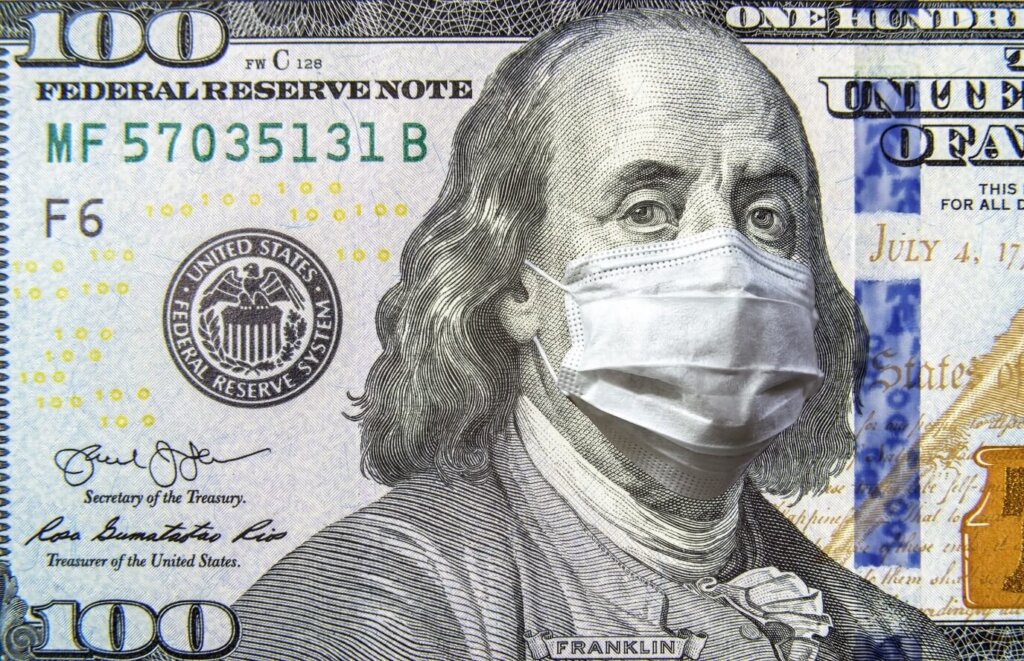There were some signs for encouragement, but that doesn’t mean everything gets better from here. Economies and markets never go straight up — not even in recovery mode. Markets tend to turn when investors are most desperate for a solution (any solution) to stop the bleeding. Have we reached that point yet? It’s hard to say, but money market funds saw their greatest weekly inflows on record (Marketwatch). That shows a huge spike in investor fear. If we are on the mend, it will include some gut-wrenching volatility along the way. One thing to keep in mind now and always — if you are a long-term investor, market volatility is what built your account balance. Volatility will continue to build it going forward.
We have to be patient when the market doesn’t do what we want it to.
The equity markets have shown over time that they are unbounded on the upside and limited on the downside. An overbought market will eventually correct itself until it reaches an oversold position. As long as the economy continues to function (and this one is), the earnings of companies will be the primary drivers of equity valuations. For this reason, a correction will bottom and rise again while a rising market can continue to rise … as long as the economy expands, markets will expand. Trying to time those inflection points is a losing proposition.
Research shows that amid the highs and lows, markets grow 75% of the time. This means that patient investing is better than reactive investing. We don’t know when the best times in the market will be … nor the worst. Trying to time the market has kept the average investor from even keeping pace with inflation over the long-term while even unmanaged indices had robust returns (JP Morgan). Staying invested through turmoil has historically been a much better strategy for the average investor than trying to avoid the short-term periods of loss.
Your appetite for risk should be reflected in your portfolio allocation. Trying to smooth out the extremes of the market will help mute downside risk … and upside potential. Investors should have their risk-tolerance reflected in their investment choices.
Although we have no idea what tomorrow holds with clarity, I believe we will get through this period. The virus spread will eventually be contained, the economy will return to growth, and stock prices will advance. How bad it gets before then is unknown. Market liquidity and credit concerns along with the spread of the virus in coming weeks will likely keep pressure on equities. Policymakers are expected to continue to aggressively address market liquidity concerns, and fiscal measures will dampen the stress in the credit markets. How deep the economic damage will be is a moving target and depends on the length of time this drags on. Once the virus outbreak peaks, the economic impact will be better understood.
Despite the uncertainty regarding when this period will end and how the other side will look, I am confident the global economy will eventually heal and long-term investors can profit. After every economic contraction (and corresponding earnings decline) the economy resumes an upward path and earnings move to new highs. Stock prices do as well. After the twelve bear markets since 1957, stocks recovered to new highs in just under 24 months on average, with a median of about 14 months (FactSet). We are entering a period of falling corporate profits due to the shutdown of the global economy as we attempt to halt the COVID-19 virus spread. Stock prices are already down substantially to reflect the fear and pending decline in earnings. At some point, the virus spread will become less of a drag on economic conditions, and commerce will restart. Earnings, likewise, should resume an upward trend. Stock prices should rise.
Investors who have seen their portfolios suffer in this timeframe will likely be rewarded for patience. Those who are uncertain should speak to their financial advisors.










